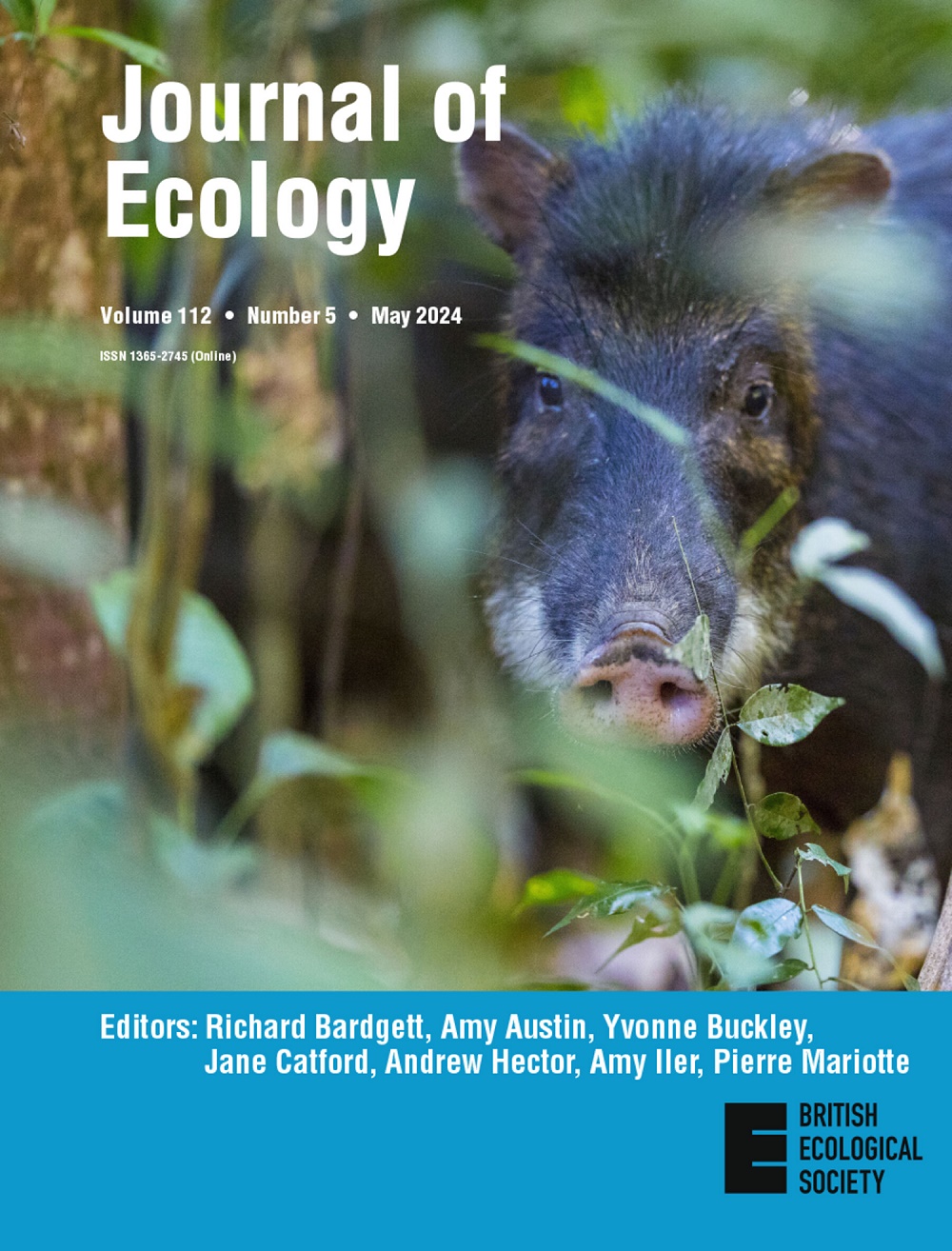A path towards appropriate degradation experiments for assessing carbon sequestration potential of macroalgae
IF 5.6
1区 环境科学与生态学
Q1 ECOLOGY
引用次数: 0
Abstract

为评估大型藻类固碳潜力而进行适当降解实验的途径
生物多样性和气候危机增加了了解海洋碳固存的周转率和驱动因素的紧迫性。人们的努力集中在测量大型藻类的降解,以量化它们的碳可能被封存了多少。我们系统地回顾了有关大藻降解的文献,汇编了364个指数衰减常数k的测量值。迄今为止,大多数降解实验(1)是在水族箱或浅水环境中进行的,(2)时间跨度短,(3)使用干燥或冷冻材料,或(4)很少纳入驱动降解的环境梯度。在潮间带和潮下生境中,经过预处理的藻组织的衰变常数高于新鲜的藻组织,并且当耐火材料存在而不是不存在时。这些模式对估计大型藻类向深海输出碳的效率具有重要意义。合成。我们建议未来对大藻降解的研究:(1)采用标准化的方法,例如使用新鲜材料和10毫米孔径的垃圾袋,使研究更具可比性;(2)以足够的频率测量降解,以可靠地估计衰变常数和/或耐火材料;(3)纳入环境梯度,包括深度、光和氧的可用性,以改进对大藻向更深水迁移过程中碳再矿化率的估计。
本文章由计算机程序翻译,如有差异,请以英文原文为准。
求助全文
约1分钟内获得全文
求助全文
来源期刊

Journal of Ecology
环境科学-生态学
CiteScore
10.90
自引率
5.50%
发文量
207
审稿时长
3.0 months
期刊介绍:
Journal of Ecology publishes original research papers on all aspects of the ecology of plants (including algae), in both aquatic and terrestrial ecosystems. We do not publish papers concerned solely with cultivated plants and agricultural ecosystems. Studies of plant communities, populations or individual species are accepted, as well as studies of the interactions between plants and animals, fungi or bacteria, providing they focus on the ecology of the plants.
We aim to bring important work using any ecological approach (including molecular techniques) to a wide international audience and therefore only publish papers with strong and ecological messages that advance our understanding of ecological principles.
 求助内容:
求助内容: 应助结果提醒方式:
应助结果提醒方式:


